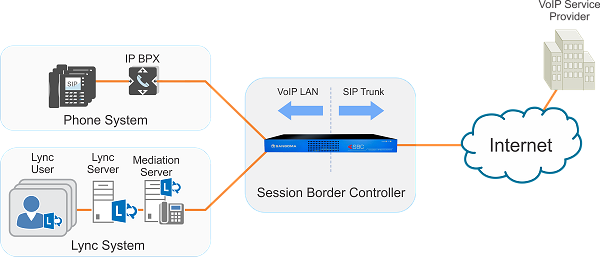- HOME
- PRODUCTS
- SOLUTIONS
- Service Providers
- Secure Remote User Management
- Microsoft Lync Skype for Business: All-in-One Solution
- Enterprise Communications
- Affordable PBX Platforms
- Branch Office Survivability
- Call Recording Directly From T1/E1
- Connecting Legacy Equipment to an IP PBX
- Connect Legacy Equipment to Next Generation IP PBXs
- Contact Centers
- Fax over IP
- Interactive Voice Response
- IP-PBX Systems
- Lync Interworking with IP-PBX
- Remote Office Connection without VPN
- SIP Trunking – Enterprise
- Education
- OEM
- Developers and Integrators
- PURCHASE
- RESOURCES
- NEWS & EVENTS
- SUPPORT
- CONTACT US
- HOME
- PRODUCTS
- SOLUTIONS
- Service Providers
- Secure Remote User Management
- Microsoft Lync Skype for Business: All-in-One Solution
- Enterprise Communications
- Affordable PBX Platforms
- Branch Office Survivability
- Call Recording Directly From T1/E1
- Connecting Legacy Equipment to an IP PBX
- Connect Legacy Equipment to Next Generation IP PBXs
- Contact Centers
- Fax over IP
- Interactive Voice Response
- IP-PBX Systems
- Lync Interworking with IP-PBX
- Remote Office Connection without VPN
- SIP Trunking – Enterprise
- Education
- OEM
- Developers and Integrators
- PURCHASE
- RESOURCES
- NEWS & EVENTS
- SUPPORT
- CONTACT US
- HOME
- PRODUCTS
- SOLUTIONS
- Service Providers
- Secure Remote User Management
- Microsoft Lync Skype for Business: All-in-One Solution
- Enterprise Communications
- Affordable PBX Platforms
- Branch Office Survivability
- Call Recording Directly From T1/E1
- Connecting Legacy Equipment to an IP PBX
- Connect Legacy Equipment to Next Generation IP PBXs
- Contact Centers
- Fax over IP
- Interactive Voice Response
- IP-PBX Systems
- Lync Interworking with IP-PBX
- Remote Office Connection without VPN
- SIP Trunking – Enterprise
- Education
- OEM
- Developers and Integrators
- PURCHASE
- RESOURCES
- NEWS & EVENTS
- SUPPORT
- CONTACT US

Lync Skype for Business Interworking with IP-PBX
Figure 1: SBC enables integration of Lync Skype for Business into existing VoIP system
Lync can be deployed as an adjunct to an existing corporate PBX or IP-PBX to deliver UC functions with a minimum of disruption to on-going business operations. By leveraging functions of the existing system (Dial Plan, Voice Mail, Automated Attendant, IVR) and using Lync to provide UC functions such as presence, screen sharing and instant messaging, the benefits of UC can be realized while still allowing staff to follow familiar and efficient practices through use of their existing telephone system.
Lync may not easily integrate with an IP-PBX however, because it uses a unique Microsoft implementation of SIP. Protocol conversion is required between the Lync system using Microsoft SIP and the IP-PBX system using its own flavor of SIP. Unless the SIP trunks supplied by the VoIP service provider are Lync certified, protocol conversion is required between Lync (which uses TCP) and the SIP trunks (which usually use UDP). If Lync is not implemented using Lync Express, an external SBC must be deployed to allow integration with the IP-PBX and interface to standard SIP trunks.
Sangoma SBCs allow Lync to reliably and securely connect to standard SIP trunks, delivering maximum flexibility and security through any SIP trunking provider.
A Sangoma eSBC performs the required SIP protocol conversion tasks, along with several other important functions. In the scenario illustrated in Figure 1, SIP trunks are supplied by the VoIP service provider. The SBC provides a demarcation point at the edge of the corporate LAN, and protection of the corporate network from security threats. It also provides SIP interworking as required between the IP-PBX, the Lync server, SIP handsets, and other SIP equipment.
In a transition scenario where some users are switched to Lync and the remaining users stay on the existing phone system, the SBC can be configured to route calls to either the IP-PBX, to Lync, or to both simultaneously. The routing engine inside the SBC queries the LDAP database hosted by Active Directory. Every user in the company has an entry in Active Directory to handle email, and the same database can indicate if they are Lync users, along with associated routing information. By querying Active Directory via LDAP, the SBC is able to make appropriate routing decisions.
Besides SIP interworking between Lync and the IP-PBX, SIP interworking may be required if there is a mixture of vendor equipment on the corporate VoIP network.
When adding Lync to the corporate telecommunications system, a Sangoma eSBC helps to implement a smooth transition to the new corporate communications system. The SBC allows smooth interworking between the IP-PBX, Lync server, Lync phones, SIP trunks, and other SIP-based equipment on the network.
Sangoma Products for Microsoft Lync

NetBorder Carrier SBC
NetBorder Carrier SBC: Carrier Grade Security and Interoperability 250 to 4,000 sessions, field upgradeable Allow any SIP CPE endpoint to safely connect with no interop concerns Connect VoIP islands together to create “all IP” infrastructure Mediate communications with other service providers Provides security for internal and external threats Dual redundant PSU available – DC and AC […]
Read More

Vega Enterprise SBC
Vega Enterprise SBC: Security and Interoperability for the Enterprise Scalability from 25–250 sessions/calls (field upgradeable) All-in-one appliance for SIP and TDM connections Traffic visualization tools Cost-effective session-based licensing (no hidden fees) Enterprise inter-site networking and SIP trunking border control Local security management for SMBs and small enterprises Hardware-based transcoding Qualified for Microsoft® Lync® and Skype for Business® […]
Read More
